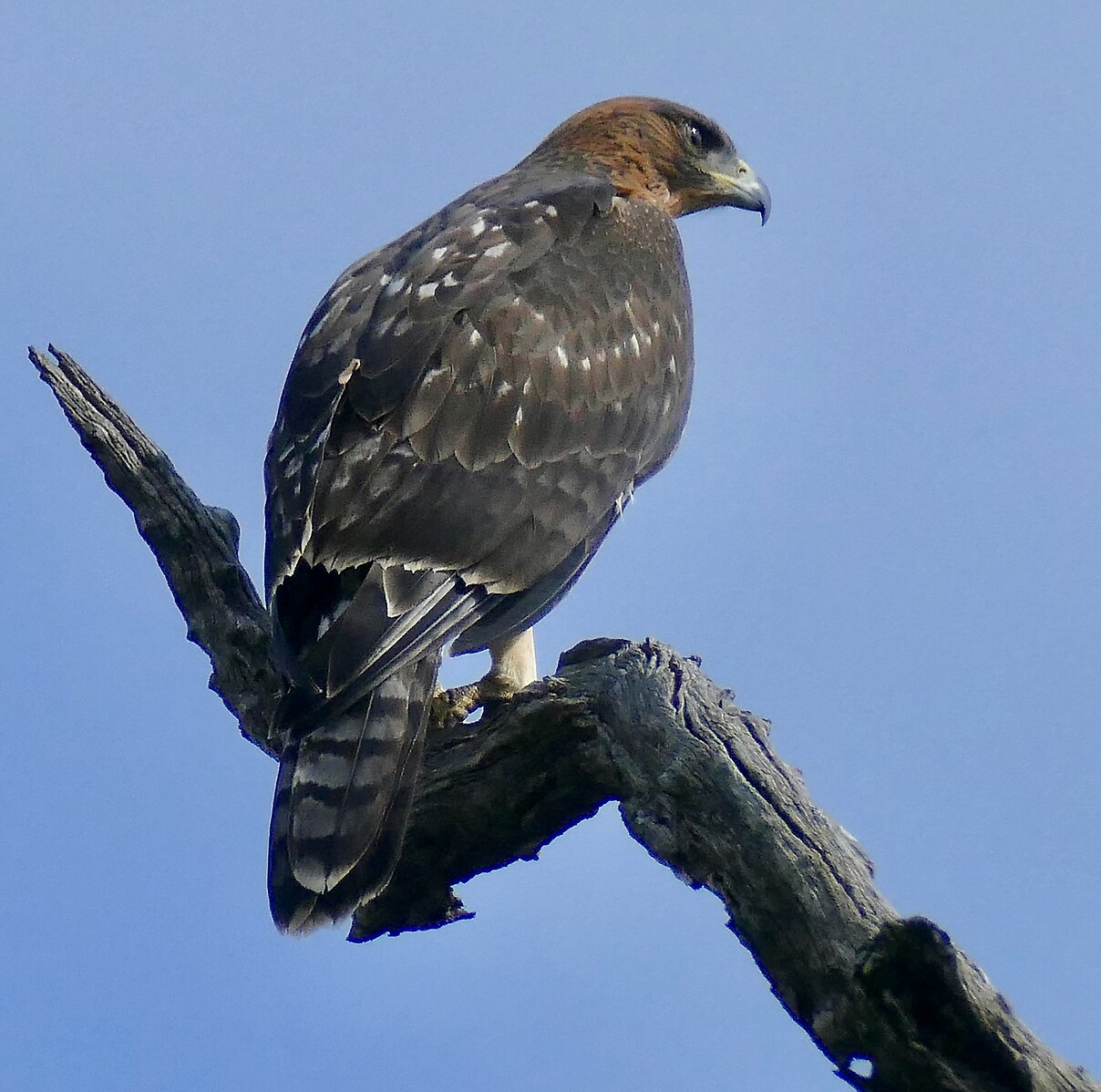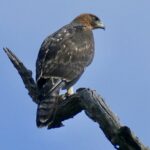The African hawk-eagle (Aquila spilogaster) is a large and powerful bird of prey found across sub-Saharan Africa. These magnificent raptors are known for their distinctive feather patterns and adaptations that make them skilled hunters in their savanna and woodland habitats.
Feather Characteristics of the African Hawk-Eagle
The African hawk-eagle’s feathers are a sight to behold, with a unique blend of colors and patterns that help them blend seamlessly into their environment. Here are some of the key features of their feathers:
Plumage Coloration
- Adults have a pale whitish-grey “window” on the base of their primaries (the longest flight feathers).
- Their tail is grey with obscure bars, and they have black trailing edges with contrasting greyish-white flight feathers underneath.
- Juveniles have a creamy window and barred tail from above, and rufous (brownish-red) wing linings that match the forebody from below.
Feather Structure
- African hawk-eagles have longish tails and long, slender feathered legs, with large, robust feet.
- Their feathers are adapted to the warm climate, with a mix of dense and long feathers that don’t require an overly fluffy coating.
- The underwing feathers are predominantly white with a black edge, and the underwing coverts are predominantly black with white patches.
- The upper parts of the body are mostly blackish, with slight variations of white spots or brown areas.
Sexual Dimorphism
- It’s difficult to distinguish between male and female African hawk-eagles based on appearance alone.
- However, studies suggest that female African hawk-eagles may have heavier markings on their feathers compared to males.
- Females are also generally larger than males.
Adaptations of African Hawk-Eagle Feathers
 Image source: African Hawk-Eagle by Bernard DUPONT
Image source: African Hawk-Eagle by Bernard DUPONT
The feathers of the African hawk-eagle are not just aesthetically pleasing; they also play a crucial role in the bird’s survival and hunting abilities. Here are some of the key adaptations:
Camouflage
The mottled and varied coloration of the African hawk-eagle’s feathers helps them blend in with the savanna and woodland environments they inhabit, making it easier for them to ambush their prey.
Flight Efficiency
The long, slender feathered legs and large, robust feet of the African hawk-eagle help them maintain balance and control during flight, allowing them to maneuver quickly and efficiently while hunting.
Thermoregulation
The mix of dense and long feathers on the African hawk-eagle’s body helps them regulate their body temperature in the warm African climate, keeping them comfortable and able to focus on hunting.
Threats to African Hawk-Eagle Feathers
Despite their impressive adaptations, the African hawk-eagle faces several threats that can impact the health and appearance of their feathers:
- Habitat loss due to deforestation and woodland tree cutting can reduce the availability of suitable nesting sites and hunting grounds.
- Persecution by farmers due to predation on domestic fowl can lead to the shooting or trapping of these birds, potentially damaging their feathers.
- Environmental pollution and contaminants can also affect the quality and condition of the African hawk-eagle’s feathers.
Conclusion
The feathers of the African hawk-eagle are a true marvel of nature, showcasing the incredible adaptations and survival strategies of this magnificent bird of prey. By understanding the unique characteristics and adaptations of the African hawk-eagle’s feathers, we can better appreciate the intricate balance of their ecosystem and the importance of conserving these impressive raptors.
References:
– African hawk-eagle – Wikipedia. (n.d.). Retrieved from https://en.wikipedia.org/wiki/African_hawk-eagle
– African hawk-eagle – Facts, Diet, Habitat & Pictures on Animalia.bio. (n.d.). Retrieved from https://animalia.bio/african-hawk-eagle/1000
– African Hawk-Eagle Aquila spilogaster – eBird. (n.d.). Retrieved from https://ebird.org/species/afrhae1
– African Hawk-eagle | The Peregrine Fund. (n.d.). Retrieved from https://peregrinefund.org/explore-raptors-species/eagles/african-hawk-eagle
– African Hawk-Eagle: The Ultimate Guide – Operation Migration. (n.d.). Retrieved from https://operationmigration.org/african-hawk-eagle-the-ultimate-guide/

